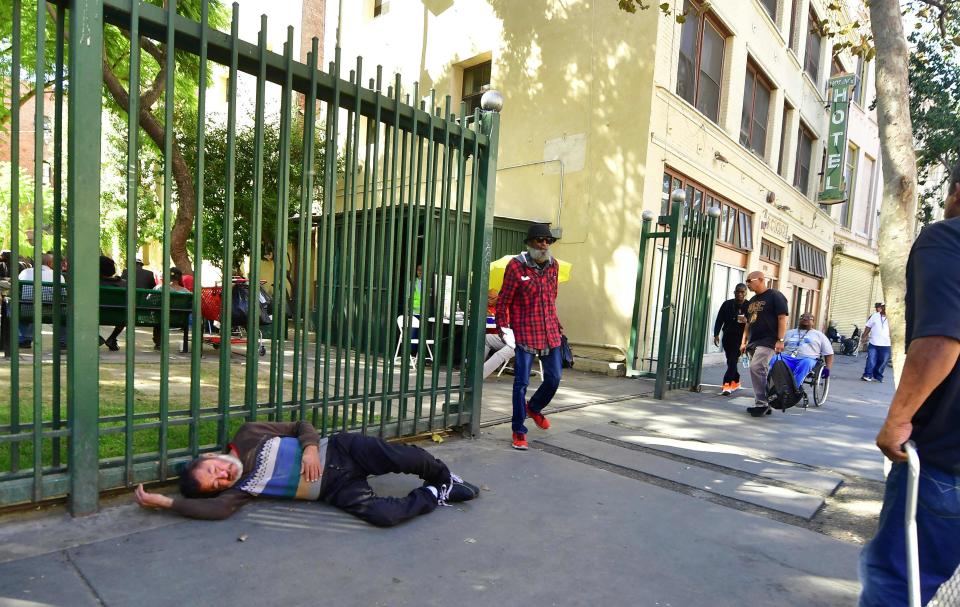In California: State 'reopens' tomorrow. What changes and what doesn’t?
I'm Winston Gieseke, philanthropy and special sections editor for The Desert Sun in Palm Springs, bringing you some of today's top headlines from this great state of ours.
Have a friend who wants California news delivered to their inbox for free? Let them know they can sign up via this link.
California reopens tomorrow: What changes and what doesn’t?

If all goes as expected and promised, on Tuesday the Golden State's 15-month-long ordeal of public health restrictions, mandates, bans and color-coded tiers to stem the COVID-19 pandemic will finally come to an end.
But, as Ben Christopher writing for CalMatters points out, some mixed messages along the way have caused confusion. So, what will — and won’t — actually happen Tuesday?
Will I be able to sit inside a bar, work out at a gym or go to the movies?
Probably. Counties will still be free to impose their own public health restrictions if they choose to — but only if they’re stricter than what the state is requiring. So far, no counties have said that they’ll part ways with the state’s rules, though a few, like San Francisco, say they’re still mulling over their options. Don't be surprised if you still spot a few “No Mask, No Service” signs after Tuesday.
Can I go to a concert?
Depends. The state has said it will impose additional restrictions on “mega-events," which are defined as anything that draws more than 5,000 people indoors or 10,000 outside.
According to the most recent state guidance, concerts, conventions and other indoor mega-events will only be open to people who can prove they’ve been vaccinated or tested negative for coronavirus in the last 72 hours.
Once I’m inside the bar, gym or movie theater, can I finally take this mask off?
Yes, if you’re vaccinated. However, there are still exceptions for venues where the potential for many vulnerable people congregating in a confined place is high: hospitals and other health care settings, school classrooms, prisons and jails, public transit and nursing homes.
What about when I’m at work?
This question is more complicated. Wednesday night, the state’s Occupational Safety and Health board agreed to take the new state public health mask guidance into account and vote on new workplace rules on June 17. If affirmed, they might not go into effect until June 28.
And now for some good news:
COVID-19 cases continue to fall in California
California ranked 41st among the states where coronavirus was spreading the fastest on a per-person basis, according to a USA TODAY Network analysis of Johns Hopkins University data. With 11.87% of the country's population, California had 6.19% of the country's cases in the last week.
Across California, cases fell in 29 counties, with the best declines in Los Angeles, Solano and Orange counties. Meanwhile, the worst weekly outbreaks on a per-person basis were in Modoc, Lassen and Amador counties.
A total of 3,801,728 people in California have tested positive for the coronavirus since the pandemic began, and 63,193 people have died from the disease, Johns Hopkins University data shows. Throughout the United States 33,461,982 people have tested positive and 599,769 people have died.

Are you ready to get out of the house and explore? In his On the Road column, Tim Viall suggests that you stay in the state and plan that laid-back vacation closer to home this year as world class destinations — such as Lake Helen in Shasta County — are closer than you think.
We got used to being home with our pets during the pandemic. Now what?

A recent survey from Rover.com, an online platform for pet sitters, reported that 93% of people said their “pandemic pet” improved their mental and/or physical well-being while sheltering in place to avoid exposure to COVID-19. More than 80% said it made working from and being home more enjoyable.
Even the U.S. Centers for Disease Control and Prevention touts the benefits of pet ownership, including decreased blood pressure, cholesterol levels and feelings of loneliness, and increased happiness.
The American Kennel Club suggests reducing separation anxiety in dogs by encouraging them to spend more time away from you, in the yard alone or by sleeping in their own bed; working up to you being away for longer periods of time; giving them plenty of exercise; and providing interactive toys. And don't be anxious in front of them because they can pick up on it, the club said.
Cats are a little more difficult to train, but experts recommend much of the same, especially if they're indoor cats. Read more here.
California's homelessness crisis is at a tipping point. Will a $12B plan put a dent in it?

California's homeless problem has been out of control for decades. Then came COVID-19.
The result has been a deadly combination of medical crisis, human hopelessness and bureaucratic red tape as the state, reeling from the effects of the virus, tries to rebound with a plan for its 160,000 homeless people. That number eclipses any other state — and accounts for half of the country's entire unsheltered population.
The state is at a crossroads in its post-pandemic attempt to curb homelessness, and the rest of the nation is watching. Solving the cycle of homelessness has befuddled policymakers for decades. Money is thrown at it, as are new ideas. Yet more people end up living on the streets.
The proposal includes $8.75 billion over two years to create an estimated 46,000 housing units, expanding on a program launched during the pandemic to convert motels and other properties into housing. It also includes $3.5 billion on rental subsidies, new housing and shelter resources with the aim of ending family homelessness within five years.
Dr. Dre, Jimmy Iovine join forces to open new high school for the ‘inner-city kid’

Rap icon Dr. Dre and music industry mogul Jimmy Iovine have teamed up to create what L.A. schools Superintend Austin Beutner says could be "the coolest high school in America."
The Los Angeles Times reports that Dre and Iovine, both reportedly billionaires, said they would spend whatever is necessary to make the school place that will motivate L.A. students to be critical thinkers, entrepreneurs and innovators.
Dre told the paper he wants to reach “the inner-city kid, the younger me.” Iovine said the school was "for kids who want to go out and start their own company or go work at a place ... like Marvel or Apple or companies like that.”
It will not be a music school, Iovine said.
This is not the first instance of educational philanthropy for the two long-time friends. In 2013, Dre and Iovine donated a combined $70 million to launch the new University of Southern California Academy for Arts and Technology.
The new high school, which was approved last week by the L.A. Board of Education, is slated to open in fall 2022 in South L.A.
In California is a roundup of news from across USA Today network newsrooms. Also contributing: CalMatters, Los Angeles Times. We'll be back in your inbox tomorrow with the latest headlines.
As the philanthropy and special sections editor at The Desert Sun, Winston Gieseke writes about nonprofits, fundraising and people who give back in the Coachella Valley. Reach him at winston.gieseke@desertsun.com.
This article originally appeared on USA TODAY: In California: State reopens tomorrow. What changes and what doesn’t?

 Yahoo Movies
Yahoo Movies 
